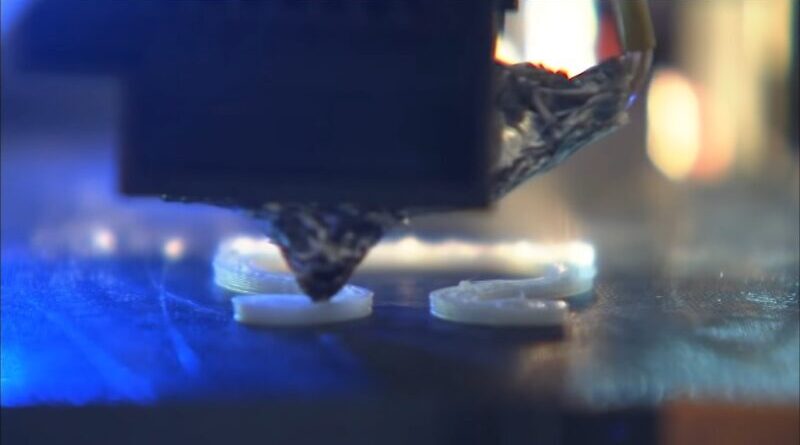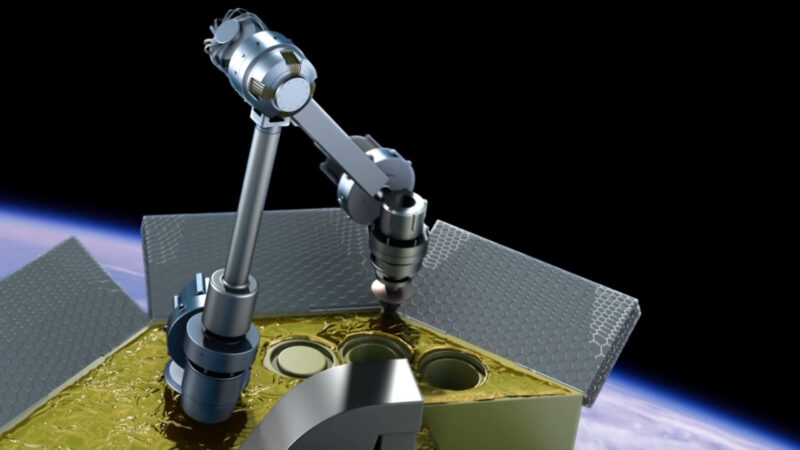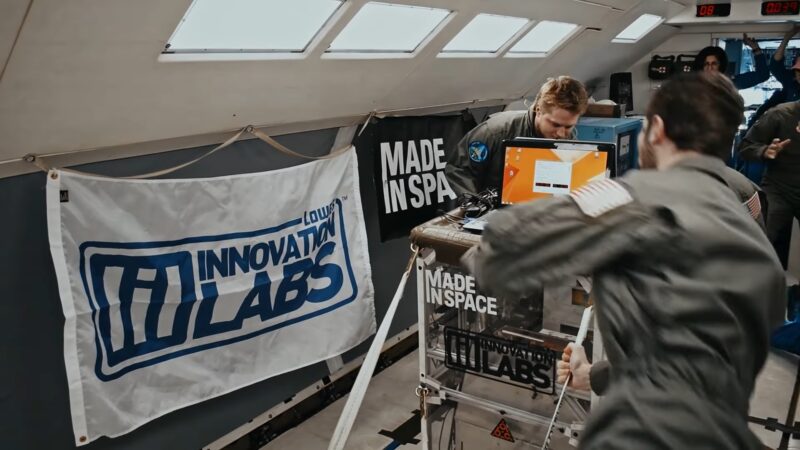In 2014, an extraordinary collaboration between Made In Space, Inc. (MIS) and NASA marked a historic milestone in space exploration. With the successful deployment of 3D Printing in Zero-G Experiment (3DP), the team achieved the unprecedented feat of manufacturing the first object in space.
This event didn’t just break new ground; it opened a gateway to endless possibilities in space manufacturing, fundamentally altering the realm of what was considered achievable in extraterrestrial environments. The implications of this accomplishment were immense.
By establishing the capability to print objects in space, 3DP paved the way for advanced innovations and set the stage for a future where humans could sustainably live and work in space beyond low Earth orbit. This groundbreaking achievement was a testament to the power of human ingenuity and a clear signal that the barriers to space exploration were being pushed further than ever before.
A Story of Firsts

The journey of 3DP was a series of pioneering moments. MIS didn’t just print the first part in space; they were also the first to upload a design for printing to space and to establish a permanent commercial 3D printing facility, the Additive Manufacturing Facility (AMF), aboard the International Space Station (ISS).
This series of firsts underlined MIS’s role as a trailblazer in space technology. The success of 3DP was not just a technical achievement but a cultural one, embodying a philosophy where failure was not an option.
This mindset continues to drive MIS’s innovation today, with current projects and advanced technologies like Archinaut and new space-enabled manufacturing capabilities tracing their origins back to 3DP. The journey of MIS, from its modest beginnings to its current status as a leader in space technology, is a powerful narrative of achieving extraordinary goals with limited resources, driven by passion and relentless work ethic.
Humble Beginnings
The story of the world’s first zero-gravity printer began with a journey across the country. Mike Snyder, the Principal Investigator of the 3D printing project and then Director of Research and Development at MIS, relocated from Ohio to California with a clear mission: to pioneer the realm of 3D printing in space and push the boundaries of human space exploration.
This marked the beginning of an ambitious venture by MIS, then a small, emerging company to be the first to print usable parts in the extraterrestrial environment. MIS’s first office, situated under the supersonic wind tunnel at Ames Research Center in Mountain View, California, was the birthplace of the AMF that would later find its home on the ISS.
Within this modest setting, a dedicated team of four worked tirelessly, often for 14 to 16 hours a day, laying the groundwork for what would become a revolutionary step in space technology.
Building the Foundation
In these early stages, the core team faced numerous challenges, including limited facilities and resources. Despite these constraints, their focus never wavered. They were united by a shared vision and determination to achieve something that had never been done before.
The work conducted in that small room at NASA Ames would form the foundation for all future development phases of 3D printing technology in space. This period of intense, focused work was characterized by a spirit of innovation and creativity.
The team’s efforts were driven by a blend of technical expertise and a deep commitment to their mission. This phase was not just about developing technology; it was about building the foundation of a company that would go on to redefine the boundaries of space exploration and manufacturing.
Failure is Not an Option
Faced with limited resources, the team at MIS embraced a mindset where failure was not an option. This philosophy fueled their journey, guiding them toward success through meticulous preparation and technical excellence.
They approached each development phase with precision, driven by a passion for innovation and an unwavering focus on their goals. This attitude of relentless pursuit of success was not just aspirational but methodical.
The team systematically reduced risks to ensure the success of their project. For instance, when implementing the print unit for the ISS, they didn’t settle for creating just one; they built three.
Each unit served a specific purpose: the primary unit for the ISS, a backup flight unit, and a ground unit for troubleshooting. This strategic planning and foresight were instrumental in navigating the challenges of space technology development.
Learning and Adapting from Challenges
The path to success was strewn with obstacles and near failures, each serving as a critical learning opportunity for the team. One such challenge was encountering inferior materials from a supplier at a crucial stage in the project.
This incident not only tested the team’s resilience but also highlighted the importance of risk mitigation in all future projects.
The First Part Ever Printed

The first part to be printed in zero gravity was not just a component; it was a symbol of human ingenuity and a testament to the potential of space manufacturing. This part, an electronics protector for the 3D printer’s extruder, represented a pivotal moment in space exploration and technology.
The excitement and anticipation shared by the MIS team and the flight crew aboard the ISS were palpable as they prepared to make history. However, this historic moment was not without its challenges.
Initially, the printer faced technical issues, which led to a tense period of troubleshooting. Using the ground unit as a reference, the team discovered and rectified the problem—a missing driver in the system—thereby paving the way for this groundbreaking print.
This successful resolution underscored the team’s technical acumen and their ability to overcome obstacles in high-pressure situations.
Leveraging Every Opportunity
The team’s dedication to maximizing their time aboard the ISS was remarkable. They utilized every available moment to test and print as many parts as possible, even after accomplishing the initial objectives of the ISS experiment.
This proactive approach was not just about meeting immediate goals; it was about gathering data and insights to inform future projects and designs.
Frequently Asked Questions (FAQs)
How does zero gravity affect the 3D printing process?
In zero gravity, the lack of weight affects how materials are layered and bonded. This requires specialized printers and printing techniques to ensure the structural integrity and functionality of printed parts.
What materials are used for 3D printing in space?
Common materials include various plastics and polymers, specifically designed for space conditions. Research is ongoing into using metals and other materials for more diverse applications.
Can the zero-gravity printer create complex components?
Yes, the printer is capable of creating complex geometries that might be difficult or impossible to produce on Earth, owing to the unique conditions of microgravity.
How does 3D printing in space benefit Earth-based technologies?
Technologies developed for space often find applications on Earth, such as advancements in materials science, manufacturing efficiency, and sustainable resource use.
Is it possible to recycle materials in space for 3D printing?
Research is ongoing to develop efficient recycling processes in space to reuse materials for 3D printing, minimizing waste and maximizing resource utilization.
What is the future of 3D printing in space exploration?
Future applications include building habitats, manufacturing replacement parts, and creating tools for missions to the Moon, Mars, and beyond, significantly reducing dependency on Earth-supplied resources.
How do zero-gravity printers get repaired if they malfunction in space?
They are designed for easy troubleshooting and repair by astronauts. Spare parts and detailed instructions are provided, and ground support teams assist with remote diagnostics and solutions.
Final Words
The story of the world’s first zero-gravity printer is not just about a technological triumph; it’s about human ambition and ingenuity transcending Earth’s boundaries. It heralds a future where the possibilities of space exploration and living are limitless, powered by the endless potential of in-space manufacturing.
